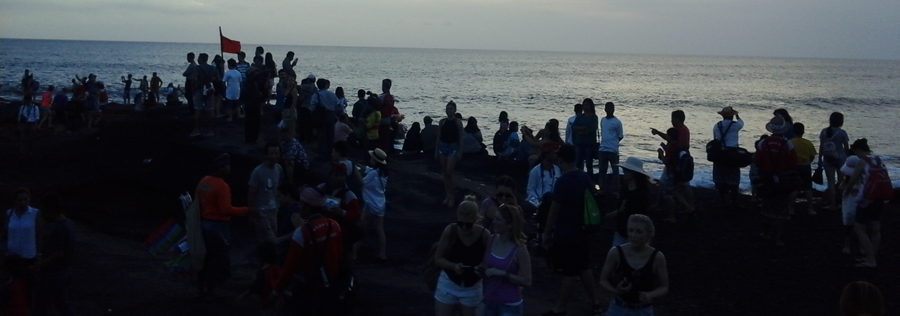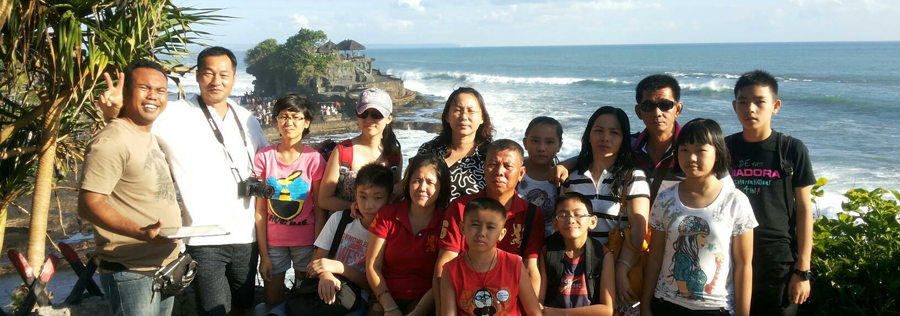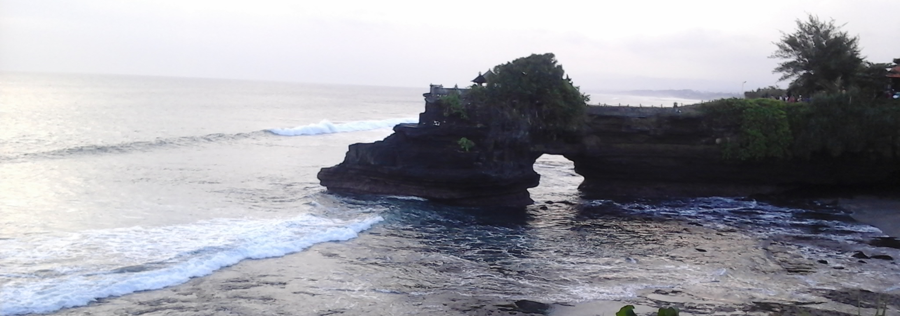
After centuries of large waves persistently crashing at its rock base, Tanah Lot faced the constant threat of erosion, reaching a significant decline in 1980. The authorities carried out preservation efforts to Tanah Lot and other historical sites island-wide with aid from the Japanese government. Fully restored, a third of the present Tanah Lot is actually artificial rock. At high tide, waves flood the causeways making it impossible to cross. At low tide, you may cross to view the rock base where the legendary ‘guardian’ sea snakes dwell in crevices around the Tirta Pabersihan fountain. This natural spout is the source of holy water for all the temples in the area. Priests at the fountain bless visitors by sprinkling holy water over their heads. You can cup your palms and take a sip to prove it is amazingly fresh water. Onshore temples include the Penyawang, a spiritual proxy to Tanah Lot that hosts pilgrims when the main offshore temple is inaccessible during high tide. Other smaller temples around the site host prayer sessions for various aspects of the villagers’ agrarian life, from good rice harvests to rites of passage. North of Tanah Lot is Batu Bolong, similarly built on a rock formation with a ‘hollow’ overpass linking to the mainland. Convenient pathways and well-kept tropical gardens line the grounds from Tanah Lot to Batu Bolong, with resting spots offering shades and good viewpoints to both outcrops. Art shops selling souvenirs and curios of all sorts line the pathway from the parking area to the temple, also with peddlers selling traditional snacks such as jaja kelepon –yummy, must-try palm sugar-filled gelatinous balls rolled in grated coconut.



 + Top
+ Top
